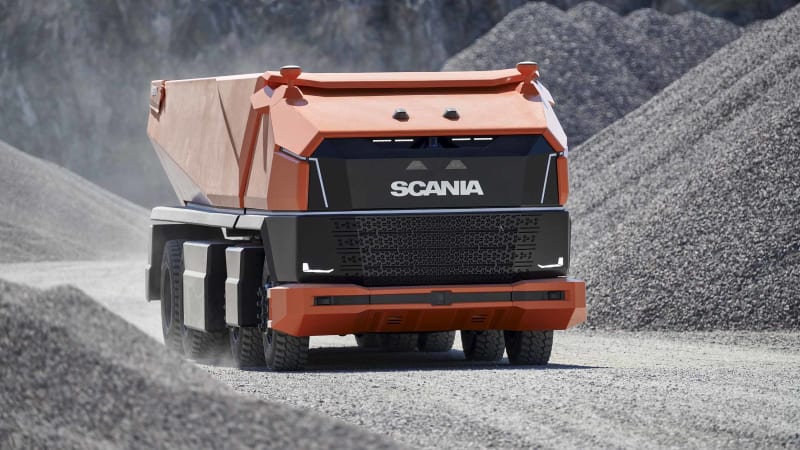Scania’s AXL concept is an autonomous, cab-less sci-fi semi
https://ift.tt/2l2QNeS

Scania, the Swedish truck manufacturer formerly associated with Saab, developed an experimental autonomous model named AXL. The design study relies on a blend of old and new technologies to meander its way through construction sites, and making it autonomous gave stylists the freedom to draw a futuristic, cab-less design that looks like it belongs in a science fiction movie.
The cab-less design makes the concept much lower than a standard truck, but curved LEDs and a cascading grille bring it in line with the design language that characterizes the firm’s human-driven machines. Some of the cameras, radars, and sensors the AXL relies on to drive itself are integrated into the black panel that also displays the huge Scania emblem. This solution suggests that, like automakers, truck manufacturers will add more black to their front ends to discreetly integrate tech.
Software is more important than hardware when it comes to teaching a truck how to drive itself, according to Scania, but the AXL is nonetheless decked out with seven cameras, a laser, and radars. Computers stitch the information generated by the hardware into a map that tells the truck where to go, where obstacles are, and where to stop. Engineers programmed a high degree of redundancy into the system, because a human driver can’t physically take over if something goes wrong.
While full technical specifications remain under wraps, we know the AXL relies on an internal combustion engine that burns renewable biofuel. Autoblog learned from a Scania representative that the concept currently runs on biodiesel. The engine can be easily swapped with one that burns another type of fuel, like biogas, because the AXL rides on the company’s modular platform.
Scania stressed the AXL is a concept, but it might not remain one for very long. Unlike highway haulers, the trucks that work in mines and construction sites are well positioned to receive autonomous technology because they operate on private property, where roads can easily be modified, and they’re almost always on the same predictable route. They don’t need to take traffic signs, fire trucks, or a kid chasing a ball into account. Costs need to be reigned in before self-driving trucks rule the world’s construction sites, however. In the meantime, Scania will continue developing the technology to ensure it’s ready to deliver autonomous machinery when the market asks for it.
“We still don’t have all of the answers, but through concept vehicles like the Scania AXL, we break new ground, and continue to learn at great speed,” concluded Claes Erixon, the head of the firm’s research and development department.
Volkswagen-owned Scania isn’t alone in its quest to trim the cab of its trucks. Arch rival Volvo teamed up with chipmaker Nvidia in 2019 to design an autonomous cab-less truck that’s even lower than Scania’s. The two companies are jointly developing a modular, scalable self-driving system they plan to bring to production sooner rather than later, though neither provided a more specific timeframe.
Auto Blog
via Autoblog https://ift.tt/1afPJWx
September 25, 2019 at 08:44AM